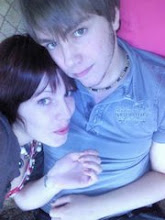Scott Kim has worked at a games design company called Shufflebrain since 1990. His influence can be seen in some of the most popular puzzles of all time - Bejeweled, Colapse and Tetris.
Kim also contributes to the well known magazine: Discover; in which he comes up with three puzzles of increasing difficulty for the magazine's readers. The subject of Discover is maths and science - Kim claims to base the puzzles around these correct subject areas and not other topics irrelevant to the magazine.
So What is a Puzzle?
A toy of contrivance that can be solved by ingenuity or patient effort? A simple task presented with a bad interface?
According to Kim, Stan Isaacs offers the best definitions of a puzzle:
- A puzzle is FUN
- A puzzle has a RIGHT ANSWER
Puzzles are a form of play, which means they can be classed as a form of games or toys. One of Kim's puzzles included in the article was a visual letter puzzle - An image of a letter from the English alphabet folded once. The only clues available were that the letter is NOT "L". However it does not state whether the answer is upper or lower case - there could be many different solutions.

(One answer at the bottom of this post)
Have a go yourself, and see how many letters (upper and lower case) you can find!
So, if it Fun?
One of the most important aspects of designing a puzzle is knowing whether it is fun, or not. Here there are three different types of fun mentioned:
- Novel - Invites you to be playful by rotating familiar objects and giving them a twist.
- Not too easy, not too hard - These puzzles are very selective, a puzzle that is much too hard can discourage people from participating in the game (if they are easily discouraged). Whereas if the puzzle is made too easy, then the player can quickly become bored and lose interest.
- Tricky - These puzzles are about shifting the perception of the players with an image.
This, however, leads us into the fact that many people have different preferences when it comes to puzzles and games - as well as different motivations for completing them.
Subjective nature: For some people, something as simple as doing the washing up can be loads of fun! And for others, not so much. It is very hard to find the 'middle-range' where the puzzle is aimed at as many people as possible, and still a fun/hard task.
The largest difference between a game and a puzzle is that games don't appear to have a single correct answer, but revolve around the player making decisions, however puzzles have specific answers.
From this article I have taken a clear understanding in the differences between games and puzzles, and also that the aspects involved in a puzzle can greatly affect the 'group' trying to complete it.
(ɟ) ǝlzznd ǝɥʇ oʇ ɹǝʍsuɐ ǝuo









0 comments:
Post a Comment